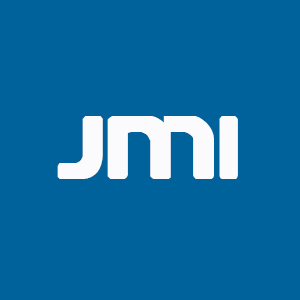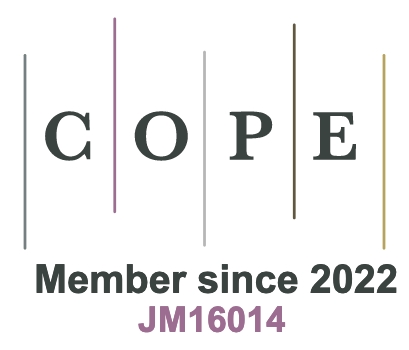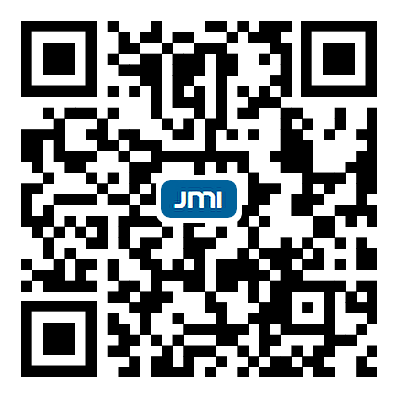REFERENCES
1. Qiu, J.; Wu, Q.; Ding, G.; Xu, Y.; Feng, S. A survey of machine learning for big data processing. EURASIP. J. Adv. Signal. Process. 2016, 2016, 67.
2. Butler, K. T.; Davies, D. W.; Cartwright, H.; Isayev, O.; Walsh, A. Machine learning for molecular and materials science. Nature 2018, 559, 547-55.
3. Xu, P.; Ji, X.; Li, M.; Lu, W. Small data machine learning in materials science. npj. Comput. Mater. 2023, 9, 1000.
4. Kumari, J.; Kumar, E.; Kumar, D. A structured analysis to study the role of machine learning and deep learning in the healthcare sector with big data analytics. Arch. Comput. Methods. Eng. 2023, 30, 3673-701.
5. An, Q.; Rahman, S.; Zhou, J.; Kang, J. J. A comprehensive review on machine learning in healthcare industry: classification, restrictions, opportunities and challenges. Sensors 2023, 23, 4178.
6. Nazareth, N.; Ramana Reddy, Y. V. Financial applications of machine learning: a literature review. Expert. Syst. Appl. 2023, 219, 119640.
7. Ghoddusi, H.; Creamer, G. G.; Rafizadeh, N. Machine learning in energy economics and finance: a review. Energy. Econ. 2019, 81, 709-27.
8. Kim, D. H.; Kim, T. J. Y.; Wang, X.; et al. Smart machining process using machine learning: a review and perspective on machining industry. Int. J. Precis. Eng. Manuf. Green. Technol. 2018, 5, 555-68.
9. Mccoy, J.; Auret, L. Machine learning applications in minerals processing: a review. Min. Eng. 2019, 132, 95-109.
10. Kadulkar, S.; Sherman, Z. M.; Ganesan, V.; Truskett, T. M. Machine learning-assisted design of material properties. Annu. Rev. Chem. Biomol. Eng. 2022, 13, 235-54.
11. Cai, J.; Chu, X.; Xu, K.; Li, H.; Wei, J. Machine learning-driven new material discovery. Nanoscale. Adv. 2020, 2, 3115-30.
12. Si, Z.; Zhou, D.; Yang, J.; Lin, X. Review: 2D material property characterizations by machine-learning-assisted microscopies. Appl. Phys. A. 2023, 129, 6543.
13. Wei, J.; Chu, X.; Sun, X.; et al. Machine learning in materials science. InfoMat 2019, 1, 338-58.
14. Liu, Y.; Niu, C.; Wang, Z.; et al. Machine learning in materials genome initiative: a review. J. Mater. Sci. Technol. 2020, 57, 113-22.
15. Wang, X.; Xiao, R.; Li, H.; Chen, L. Discovery and design of lithium battery materials via high-throughput modeling. Chinese. Phys. B. 2018, 27, 128801.
16. Hu, W.; Zhang, L. First-principles, machine learning and symbolic regression modelling for organic molecule adsorption on two-dimensional CaO surface. J. Mol. Graph. Model. 2023, 124, 108530.
17. Mai, J.; Lu, T.; Xu, P.; Lian, Z.; Li, M.; Lu, W. Predicting the maximum absorption wavelength of azo dyes using an interpretable machine learning strategy. Dyes. Pigments. 2022, 206, 110647.
18. Tao, Q.; Xu, P.; Li, M.; Lu, W. Machine learning for perovskite materials design and discovery. npj. Comput. Mater. 2021, 7, 495.
19. Wang, J.; Xu, P.; Ji, X.; Li, M.; Lu, W. Feature selection in machine learning for perovskite materials design and discovery. Materials 2023, 16, 3134.
20. Bhat, N.; Barnard, A. S.; Birbilis, N. Unsupervised machine learning discovers classes in aluminium alloys. R. Soc. Open. Sci. 2023, 10, 220360.
21. Yang, Z.; Gao, W. Applications of machine learning in alloy catalysts: rational selection and future development of descriptors. Adv. Sci. 2022, 9, e2106043.
22. Sha, W.; Li, Y.; Tang, S.; et al. Machine learning in polymer informatics. InfoMat 2021, 3, 353-61.
23. Xu, P.; Chen, H.; Li, M.; Lu, W. New opportunity: machine learning for polymer materials design and discovery. Adv. Theory. Simul. 2022, 5, 2100565.
24. Startt, J.; Mccarthy, M. J.; Wood, M. A.; Donegan, S.; Dingreville, R. Bayesian blacksmithing: discovering thermomechanical properties and deformation mechanisms in high-entropy refractory alloys. npj. Comput. Mater. 2024, 10, 1353.
25. Zhang, Q.; Hu, Y.; Li, S.; et al. Recent advances in supported acid/base ionic liquids as catalysts for biodiesel production. Front. Chem. 2022, 10, 999607.
26. Zheng, M.; Wang, Y.; Teng, H. A new “intersection” method for multi-objective optimization in material selection. Teh. glas. 2021, 15, 562-8.
27. Al Ani, Z.; Gujarathi, A. M.; Al-Muhtaseb, A. H. A state of art review on applications of multi-objective evolutionary algorithms in chemicals production reactors. Artif. Intell. Rev. 2023, 56, 2435-96.
28. Takagi, T.; Takadama, K.; Sato, H. Directional pareto front and its estimation to encourage multi-objective decision-making. IEEE. Access. 2023, 11, 20619-34.
29. Lee, J.; Lee, S.; Ahn, J.; Choi, H. Pareto front generation with knee-point based pruning for mixed discrete multi-objective optimization. Struct. Multidisc. Optim. 2018, 58, 823-30.
30. Shi, L.; Chang, D.; Ji, X.; Lu, W. Using data mining to search for perovskite materials with higher specific surface area. J. Chem. Inf. Model. 2018, 58, 2420-7.
31. Chen, H.; Shang, Z.; Lu, W.; Li, M.; Tan, F. A property-driven stepwise design strategy for multiple low-melting alloys via machine learning. Adv. Eng. Mater. 2021, 23, 2100612.
32. Zhang, S.; Lu, T.; Xu, P.; Tao, Q.; Li, M.; Lu, W. Predicting the formability of hybrid organic-inorganic perovskites via an interpretable machine learning strategy. J. Phys. Chem. Lett. 2021, 12, 7423-30.
33. Bartel, C. J.; Sutton, C.; Goldsmith, B. R.; et al. New tolerance factor to predict the stability of perovskite oxides and halides. Sci. Adv. 2019, 5, eaav0693.
34. Wang, T.; Hu, J.; Ouyang, R.; et al. Nature of metal-support interaction for metal catalysts on oxide supports. Science 2024, 386, 915-20.
35. Xu, P.; Ji, X.; Li, M.; Lu, W. Virtual sample generation in machine learning assisted materials design and discovery. J. Mater. Inf. 2023, 3, 16.
36. Li, Y.; Li, T.; Liu, H. Recent advances in feature selection and its applications. Knowl. Inf. Syst. 2017, 53, 551-77.
37. Xie, J.; Sage, M.; Zhao, Y. F. Feature selection and feature learning in machine learning applications for gas turbines: a review. Eng. Appl. Artif. Intell. 2023, 117, 105591.
38. Borchers, A.; Pieler, T. Programming pluripotent precursor cells derived from Xenopus embryos to generate specific tissues and organs. Genes 2010, 1, 413-26.
39. Zheng, W.; Chen, S.; Fu, Z.; Zhu, F.; Yan, H.; Yang, J. Feature selection boosted by unselected features. IEEE. Trans. Neural. Netw. Learn. Syst. 2022, 33, 4562-74.
40. Yang, C.; Ren, C.; Jia, Y.; Wang, G.; Li, M.; Lu, W. A machine learning-based alloy design system to facilitate the rational design of high entropy alloys with enhanced hardness. Acta. Mater. 2022, 222, 117431.
41. Wang, J.; Xu, P.; Ji, X.; Li, M.; Lu, W. MIC-SHAP: an ensemble feature selection method for materials machine learning. Mater. Today. Commun. 2023, 37, 106910.
42. Ordillo, V. Z.; Shimizu, K.; Putungan, D. B.; et al. Two-stage feature selection for machine learning-aided DFT-based surface reactivity study on single-atom alloys. Modelling. Simul. Mater. Sci. Eng. 2024, 32, 065003.
43. Lu, K.; Chang, D.; Ji, X.; Li, M.; Lu, W. Machine learning aided discovery of the layered double hydroxides with the largest basal spacing for super-capacitors. International. J. Electrochem. Sci. 2021, 16, 211146.
44. Zhao, Y.; Zhang, J.; Xu, Z.; et al. Discovery of temperature-induced stability reversal in perovskites using high-throughput robotic learning. Nat. Commun. 2021, 12, 2191.
45. Wong, T. T.; Yeh, P. Y. Reliable accuracy estimates from k-fold cross validation. IEEE. Trans. Knowl. Data. Eng. 2020, 32, 1586-94.
46. Zhang, J.; Wang, S. A fast leave-one-out cross-validation for SVM-like family. Neural. Comput. Appl. 2016, 27, 1717-30.
47. Meiyazhagan, J.; Sudharsan, S.; Venkatesan, A.; Senthilvelan, M. Prediction of occurrence of extreme events using machine learning. Eur. Phys. J. Plus. 2022, 137, 2249.
48. Novello, P.; Poëtte, G.; Lugato, D.; Congedo, P. M. Goal-oriented sensitivity analysis of hyperparameters in deep learning. J. Sci. Comput. 2023, 94, 2083.
49. Li, Z. Extracting spatial effects from machine learning model using local interpretation method: an example of SHAP and XGBoost. Comput. Environ. Urban. Syst. 2022, 96, 101845.
50. Szepannaek, G.; Lübke, K. How much do we see? On the explainability of partial dependence plots for credit risk scoring. Argum. Oeconom. 2023, 2023, 137-50.
51. Feng, W.; Gong, D.; Yu, Z. Multi-objective evolutionary optimization based on online perceiving Pareto front characteristics. Inform. Sci. 2021, 581, 912-31.
52. Khorram, E.; Khaledian, K.; Khaledyan, M. A numerical method for constructing the Pareto front of multi-objective optimization problems. J. Comput. Appl. Math. 2014, 261, 158-71.
53. Bejarano, L. A.; Espitia, H. E.; Montenegro, C. E. Clustering analysis for the Pareto optimal front in multi-objective optimization. Computation 2022, 10, 37.
54. Gomes, G. F.; de Almeida, F. A.; da Silva Lopes Alexandrino, P.; da Cunha, S. S.; de Sousa, B. S.; Ancelotti, A. C. A multiobjective sensor placement optimization for SHM systems considering Fisher information matrix and mode shape interpolation. Eng. Comput. 2019, 35, 519-35.
55. Boţ, R. I.; Grad, S.; Wanka, G. A general approach for studying duality in multiobjective optimization. Math. Meth. Oper. Res. 2007, 65, 417-44.
56. Jiménez, B.; Novo, V.; Vílchez, A. A set scalarization function based on the oriented distance and relations with other set scalarizations. Optimization 2018, 67, 2091-116.
57. Bazgan, C.; Ruzika, S.; Thielen, C.; Vanderpooten, D. The power of the weighted sum scalarization for approximating multiobjective optimization problems. Theory. Comput. Syst. 2022, 66, 395-415.
58. Hanaoka, K. Comparison of conceptually different multi-objective Bayesian optimization methods for material design problems. Mater. Today. Commun. 2022, 31, 103440.
59. Qu, B. Y.; Suganthan, P. N. Constrained multi-objective optimization algorithm with an ensemble of constraint handling methods. Eng. Optim. 2011, 43, 403-16.
60. Kazemzadeh Azad, S.; Aminbakhsh, S. ε-constraint guided stochastic search with successive seeding for multi-objective optimization of large-scale steel double-layer grids. J. Build. Eng. 2022, 46, 103767.
61. Li, X.; Shan, G.; Zhang, J.; Shek, C. Accelerated design for magnetic high entropy alloys using data-driven multi-objective optimization. J. Mater. Chem. C. 2022, 10, 17291-302.
62. Ma, Y.; Li, M.; Mu, Y.; Wang, G.; Lu, W. Accelerated design for high-entropy alloys based on machine learning and multiobjective optimization. J. Chem. Inf. Model. 2023, 63, 6029-42.
63. Chen, Y.; Tian, Y.; Zhou, Y.; et al. Machine learning assisted multi-objective optimization for materials processing parameters: a case study in Mg alloy. J. Alloys. Compd. 2020, 844, 156159.
64. Deng, Y.; Zhang, Y.; Gong, X.; et al. An intelligent design for Ni-based superalloy based on machine learning and multi-objective optimization. Mater. Design. 2022, 221, 110935.
65. Banerjee, T.; Dey, S.; Sekhar, A. P.; Datta, S.; Das, D. Design of alumina reinforced aluminium alloy composites with improved tribo-mechanical properties: a machine learning approach. Trans. Indian. Inst. Met. 2020, 73, 3059-69.
66. Wu, S.; Xu, X.; Yang, S.; Qiu, J.; Volinsky, A. A.; Pang, X. Data-driven optimization of hardness and toughness of high-entropy nitride coatings. Ceram. Int. 2023, 49, 21561-9.
67. Zhang, Y.; Xie, S.; Guo, W.; Ding, J.; Poh, L. H.; Sha, Z. Multi-objective optimization for high-performance Fe-based metallic glasses via machine learning approach. J. Alloys. Compd. 2023, 960, 170793.
68. Gao, W.; Wang, B.; Gu, Q.; et al. Accelerated discovery of high-performance 3D printing materials using multi-objective active optimization method. J. Mater. Sci. 2024, 59, 2390-402.
69. Morales-Hernández, A.; Rojas Gonzalez, S.; Van Nieuwenhuyse, I.; et al. Bayesian multi-objective optimization of process design parameters in constrained settings with noise: an engineering design application. Eng. Comput. 2024, 40, 2497-511.
70. Fang, J.; Xie, M.; Zhang, J.; et al. Optimized design of composition and brazing process for Cu-Ag-Zn-Mn-Ni-Si-B-P alloy brazing material based on machine learning strategy to improve brazing properties. Mater. Today. Commun. 2024, 39, 109317.
71. Tao, Q.; Chang, D.; Lu, T.; et al. Multiobjective stepwise design strategy-assisted design of high-performance perovskite oxide photocatalysts. J. Phys. Chem. C. 2021, 125, 21141-50.
72. Cai, X.; Zhang, Y.; Shi, Z.; et al. Discovery of lead-free perovskites for high-performance solar cells via machine learning: ultrabroadband absorption, low radiative combination, and enhanced thermal conductivities. Adv. Sci. 2022, 9, e2103648.
73. Gao, T.; Gao, J.; Yang, S.; Zhang, L. Data-driven design of novel lightweight refractory high-entropy alloys with superb hardness and corrosion resistance. npj. Comput. Mater. 2024, 10, 1457.
74. Hu, X.; Chen, Y.; Lu, J.; et al. Three-step learning strategy for designing 15Cr ferritic steels with enhanced strength and plasticity at elevated temperature. J. Mater. Sci. Technol. 2023, 164, 79-94.
75. Wei, Q.; Xiong, J.; Sun, S.; Zhang, T. Multi-objective machine learning of four mechanical properties of steels. Sci. Sin. Tech. 2021, 51, 722-36.
76. Zhou, X.; Zheng, Z.; Lu, T.; et al. Interpretable machine learning assisted multi-objective optimization design for small molecule hole transport materials. J. Alloys. Compd. 2023, 966, 171440.
77. Liu, P.; Huang, H.; Wen, C.; Lookman, T.; Su, Y. The γ/γ′ microstructure in CoNiAlCr-based superalloys using triple-objective optimization. npj. Comput. Mater. 2023, 9, 1090.
78. Wang, X.; Cao, Y.; Ji, J.; Sheng, Y.; Yang, J.; Ke, X. A multi-objective, multi-interpretable machine learning demonstration verified by domain knowledge for ductile thermoelectric materials. J. Materiomics. 2025, 11, 100886.
79. Li, Z.; Nash, W.; O’brien, S.; Qiu, Y.; Gupta, R.; Birbilis, N. cardiGAN: a generative adversarial network model for design and discovery of multi principal element alloys. J. Mater. Sci. Technol. 2022, 125, 81-96.







